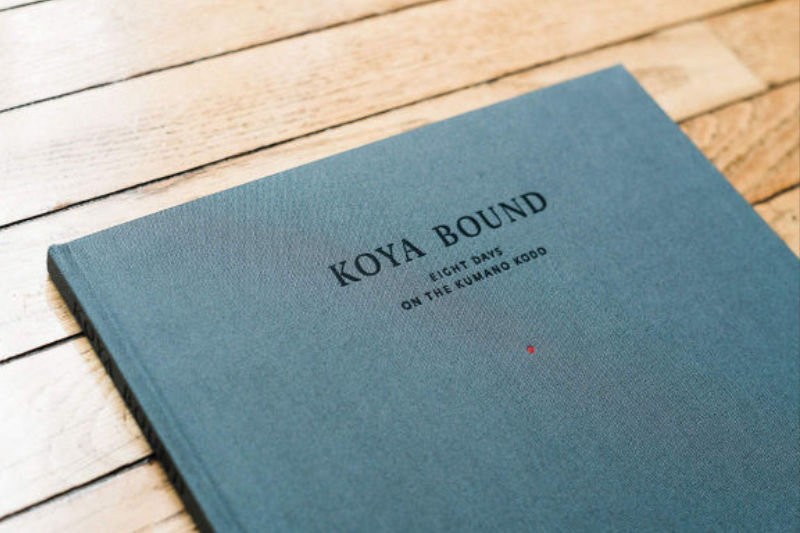
Running a Successful Membership / Subscription Program
What I learned from the second year of running my SPECIAL PROJECTS membership program
Let’s be honest, behind every membership program or subscription newsletter lingers a half-cocked suspicion: Hey, bucko, what gives? Why don’t you get a real job?
Well, because:
Against the prevailing winds of pandemic and political and social unrest, against an ever-present whisper in the ear of impostor syndrome and a thick fog of anxiety threatening to snuff out my lifeforce, against endless worry for the welfare of my family and friends, 2020 was the most creatively, spiritually, and financially successful year of my life. I published some 160,000+ words in newsletters and essays, produced a strange book about pizza toast, launched an open-source crowdfunding tool, and once again walked across Japan. And that was mostly just the second half.
The driving engine behind it all? My SPECIAL PROJECTS membership program.1
February 2021 marks entry into year three — three! — of SPECIAL PROJECTS. Much of what I wrote last year in my “Running a Paid Membership Program” essay reflecting on year one still holds true. That essay is a fine companion to this one.
If you’re membership-curious — that is, a masochist, thinking about starting a paid newsletter (2020: the year “Substack” entered the realm of “Kleenex”) or launching a Patreon community or GitHub Sponsorship or, like me, rolling your own Memberful-driven jumble of offerings — then read on. I’ll try to relay my experience with the hope of demystifying the work and stresses of setting off on your own through the creative wilds of the world.
Contents
#A Thing You Must Do

A membership program should be seen as an accelerant for work you must do.2 That is, it should be born from the desire for creative autonomy and for an untethered opportunity to explore with great curiosity and rigor, topics that may or may not be explicitly “commercially” friendly.
I harbor no illusions — it’s unlikely for a magazine or publisher to bankroll a thirty-day walk from Tokyo to Kyoto along an old highway, chatting up nearly-dead barbers and looking to place 200-year-old woodblock prints by Hiroshige in conversation with the road of today. Sure, you can cover a small bit of the walk with a magazine commission, but to take the bigger risk of months of research, action, and follow up, you need a more durable foundation. This is where membership programs soar — they are implicit and durable permission machines.
Implicit in that the support itself is a signal, and durable in that those signals are “distributed.” Permission via members is an assemblage of diffuse permissions, indie permissions, not a kingmaker bestowing some canonical singular permission. Creatively, I find this arrangement freeing. In praxis it has led to bigger, more audacious and ambitious projects than I would have attempted on my own.
There is, however, a bargain to be struck. Namely: You must work. Perhaps harder than you’ve worked at any other job. A promise is made. You are granted permission by your members and in return you must work with an energy such that no question remains that your promise of rigor and curiosity are present in your output.
I don’t think of this bargain as being “beholden” to members.
I think of this bargain as a formalization, and, boy does it help me get work done.
I find that by “formalizing” a newsletter, for example, I write more and better newsletters. By “formalizing” a walk, I walk with a sharper eye, open to more finely-grained details, with a greater empathy for those I meet along the road, and with an ever-stronger impulse to transmute those encounters into something much larger than the moment itself.
Some folks are adept at self-formalizing. Novelists that hide in their shed for years toiling away are a good example. After years of attempting that variant of creative schedule, I realized that I thrive on external formalities and my work lives and dies by deadlines. So for me, a membership program has been an accelerant in the best possible way. 2020 simply wouldn’t have been what it was without SPECIAL PROJECTS.
#Money Money Money
I am sad to report: As of January 2021, I am still yet unable to purchase a yacht. I am exceedingly happy to report, however, that because of my membership program, book sales, and photographic print sales, revenue-wise 2020 was the most financial successful year of my life.3
The biggest insight I had in 2020 was a banal but powerful one: Digital memberships and physical things make for superb bedmates.
Here are monthly sign ups for new members — January 2019 to mid-January 2021:
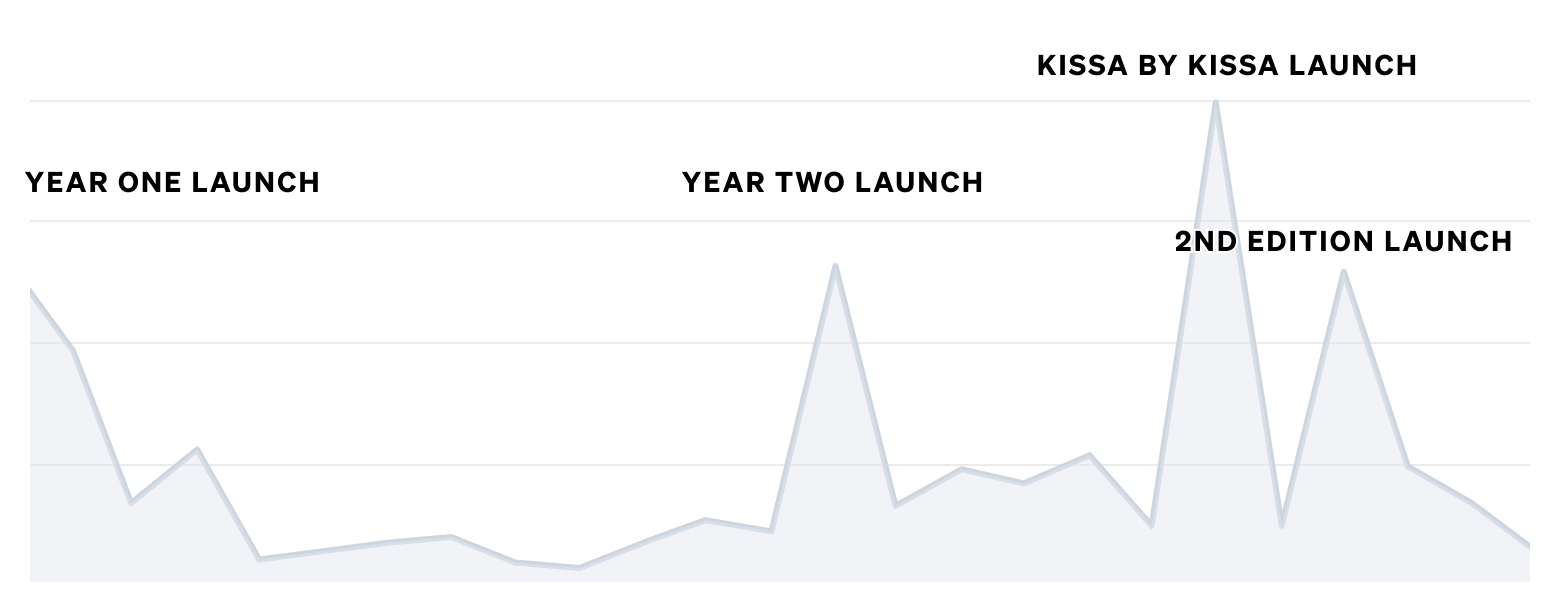
The conclusion is obvious: Membership programs thrive on “conversion events.” Do you know why NPR is so numbingly relentless during their pledge drives? It’s because casual conversions for “cultural” goods4 are exceedingly difficult to pull off. Folks need a “reason” to flip from unpaid to paid, and one of the most effective ways to do this is to offer a semi-unique object or token; totebags convert better than fuzzy feelings alone.
However, ye solo-proprietor, be wary! Production of physical things (anything, even just a sticker) can be onerous and complex and making a small thing and making a big thing share fundamental difficulties. So I highly recommend not making things just for members. Instead, make something (a book, a print, a poster, a documentary, a whatever) that you would have made no matter what, and offer it up to members at a significant discount.
Which is precisely what I did with my book launch in August, 2020.

#The Triumph of Pizza Toast
The biggest shock-delight of 2020 was the success of my book Kissa by Kissa. We sold 1,000 copies in the first three days and almost 2,000 copies in three months. It’s a $95USD retail book. That’s bonkers. Thank you thank you thank you to everyone who bought the book and to everyone who has written in with kind words.
I have a bit of experience in book making and publishing and so I had set my expectations appropriately: I anticipated a bump of about 400 sales on launch and then a nice smooth glide of 600 sales over the next two or three years. A sweet background hum of gentle revenue.
So I feign no false modesty in saying I was absolutely shocked to see the first run of 1,000 copies sell out almost instantly.
Looking back, I chalk up the success of this book to a few factors:
- I “primed the pump” of interest by writing about book production leading up to launch in my weekly Ridgeline newsletter: part 1, part 2, part 3, part 4, part 5.
- The venn diagram of my fans who are interested in photography + literature + Japan is almost a single overlapping circle.
- Pizza toast! And Japanese kissaten! The hook for the book was obvious and clear and unique.
- Limited edition: Scarcity can be a big value add (and simplify production/fulfillment logistics).
- Strong luck in immediate blog mentions: Daring Fireball, Swiss Miss, and Kottke.
I also timed the book launch with the launch of “Craigstarter” — which provided its own interest bump.


The stroke of unintended “business” genius of the launch was tying Yearly Memberships to a big discount on the book. Existing Yearly members got a $50 discount off that first edition. But I also offered a bundle for non-members wherein you could get a Yearly membership and the book all at once, discount inclusive.
The Yearly Membership costs $100 for the year. The total cost for the bundle was $145.
Roughly 20% of all buyers of Kissa by Kissa who were not members bought the bundle.
That feels like an incredibly high conversion rate for such a high-price item, and signals above all a sense of trust in me and my work. While the financial aspects of the launch were powerful, that sense of trust and validation was significantly more powerful.
2020 was the year I understood the business model of the membership program: Make books.
Which is great because that — bookmaking — has always been my “horizon goal."
#Dangerous Cages, Horizon Goals
Perhaps the most unintuitively dangerous pitfall of running a successful membership program is that of trapping yourself in a lambent cage of your own design. A cage so golden, so shiny that you sometimes forget it’s even a cage. A cage of such unparalleled seduction that you convince yourself that the cage was the thing you were desiring all along!
I am deeply suspicious of the cage.
What I mean: You start a membership program with certain goals in mind — producing a book or film or writing a newsletter for example — but because the program is successful, you twist yourself to be entirely membership focused. You’ve gone from being an artist to someone who “does” a membership program, which often involves a dominant meta-component of how to successfully run one. Which can be good or bad depending on your aims.
For me, it would be bad.
So once a year I embark on this review. It helps me remember what we’ve done, and further clarify where we’re going. Mainly, it helps keep me on track for the bigger goals that memberships enable, and helps keeps me from being an insufferable year-round membership barker.
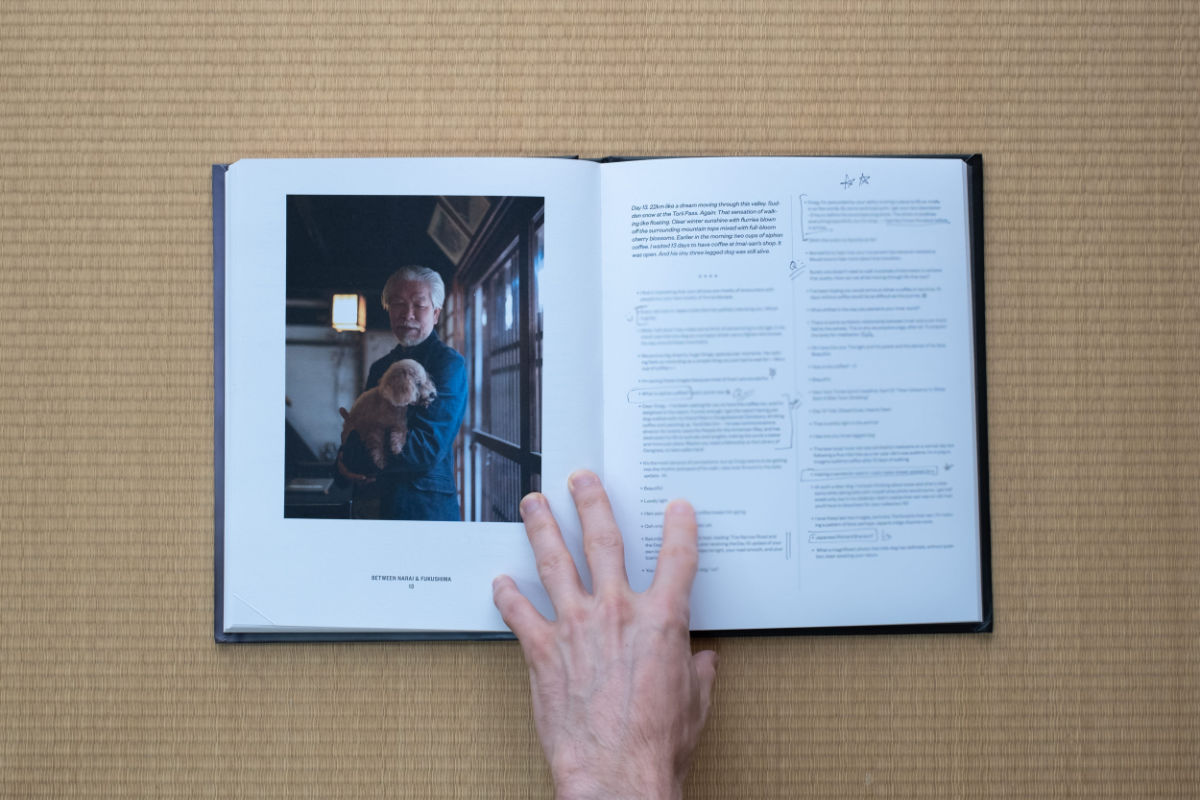
Meaning, SPECIAL PROJECTS is a community and tool enabling progress towards horizon goals. My main horizon goal is embarrassingly simple: A continuous and rigorous production of book-shaped projects until I’m dead. 5 It’s a “horizon goal” because you never arrive. You learn to wrest fulfillment from the endless pain of moving towards the goal. Often you feel like a complete dingdong walking towards it, sometimes with hail smashing you in the face, sometimes with an exciting tailwind and perfect humidity, sometimes the earth opens and covers your legs in lava — you simply have to keep walking, crawling, slithering towards that point on the horizon.
Books have been my horizon goal for roughly thirty years.
Like many others, since childhood I’ve seen books as artifacts of work to aspire to. And now having produced several, I believe more than ever in their powers. You could say that books, like, anneal the diaphanous nature of loosely held ideas, man. Or, in the words of buddy Robin Sloan, “a book requires collimation:”
Writing a book requires collimation: getting your material pointed in the same direction, filtering out the bits that wander elsewhere. I don’t mean to suggest that a book, fiction or nonfiction, ought to be just one thing; some of the very best feel polyphonic, full to bursting. But I’d argue that, in those cases, it is full-to-bursting-ness that provides the axis of collimation. The material has been aimed at that objective.
Collimated light is different. It doesn’t scatter and diffuse into darkness.
A billion tweets fade instantly. A thousand copies of a book will be with the world for at least a few centuries. A thing to be found by a future bunkerchild: pizza … toast? Maybe these timeframes are equally irrelevant within the long-now frame of things, but the mediums and the output produced therein feel spiritually antipodal. When I post a tweet I almost always think: Ugh, what am I doing? When I finish writing a book I almost always think: Ugh, what am I doing? But, the path to the book — collimating experiences into book form — nourishes and challenges in ways I fail to believe a million tweets ever can.6
And so, whenever I embark on a new membership-adjacent project — walk, newsletter, members-only zoom session, podcast, et cetera — the main question in mind is: How does this help us make a book?

#Members
I have been very lucky — my members are supportive, generous, and largely “get” what we’re doing. They form an incredible community.7
Members are super fans (see Mr. Kelly’s classic: 1,000 true fans), and their subscriptions carry three huge benefits:
- Many of your members are certain to be more successful, accomplished, and wiser than you. By some dint of dumb luck, you’re now one degree away from these incredible people.8
- Recurring membership revenue is akin to “seed capital”9 for horizon-goal work to be done.
- Members form thoughtful communities; they become an invaluable crew to bounce ideas off of, run “tests”, get feedback on half-baked ideas.
The capital aspect of memberships is pragmatic and is most likely the driving reason most folks start a membership / subscription program. Working capital is critical because working capital murders excuses. One of the biggest excuses for not executing is a lack of capital; mitigating that issue eliminates your biggest excuse for procrastination. That’s great! But once that line has been crossed the real benefits of a membership program start to reveal themselves.
Personally: I’ve found that the community / “idea bounce” aspect of members to be of tremendous creative and spiritual value.

#The Year of Video
Member idea bouncing happens over emails or video. And, boy, was 2020 the year of “doing video.” I started running production livestreams for the Ise-ji online book, which turned into quirky coworking sessions of discussing tools, editing techniques, photo management, meditation, and more. I also started running quarterly-ish “Office Hours” one-on-one chats. Those office hours chats were great, but I found a lot of folks asking the same questions, and the fact that membership numbers were rising meant the chances of getting a slot were exceedingly low. (The fifteen or so slots would fill up in about a minute.)
Still, it was valuable to put faces to memberships, and I ended up launching the members-only Office Hours podcast in order to more evenly distribute the answers to many of those oft asked questions. Questions like:
- “How do you build connections through work?”
- “How do you become a better writer?”
- “How do you do interesting work / live a unique life?”
- “How do you ‘measure’ success?”
… and more. But that only grew out of the one-on-one video calls. And I’ve replaced the one-on-ones with group Zooms, which offers a bit of that old intimacy but with far greater access.
This evolution and overlap of one-on-one to podcasts to group zooms is a great example of being nimble within the confines of a membership program. State hypotheses! Test! Iterate some more! You’re free to mix it up because you own the space within which you’re working. This is but one of many great pleasures of running a membership program.
In April I ran another “Pop-Up Walk” at the start of the pandemic. Pop-up walks are basically little micro-documentaries of walks. I produced the first one in December 2019 along the Ise-ji route in Mie Prefecture.
In June we had a guest lecturer give a members-only talk about the art islands in the Japanese Inland Sea.
In September I shot a bunch of behind-the-scenes book production footage. (I still have to knock that into a small video!)
In October we ran a members-only Kissa by Kissa Q&A, and then in December, a year-end members-call.
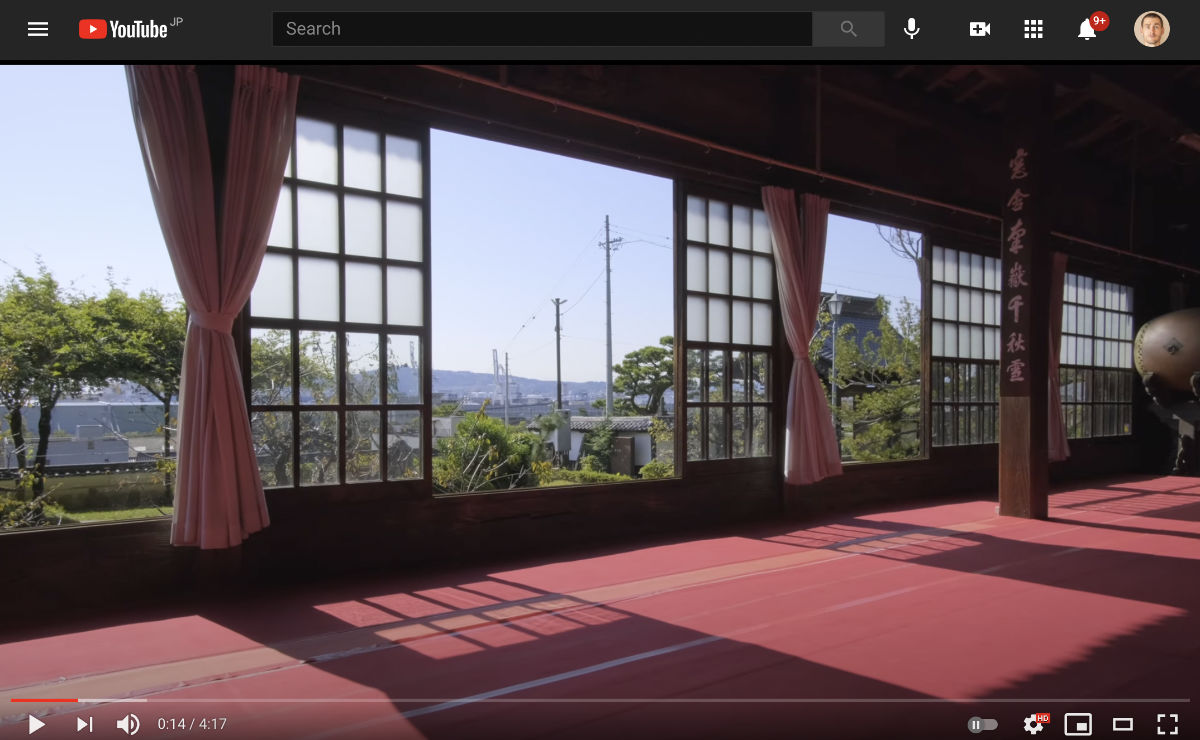
Oh, and in November I produced some fifty-three 4k binaural videos of moments or “windows” along the Tōkaidō. Those are available to all on my YouTube page.
Needless to say, 2020 was the year of normalizing video. I start 2021 feeling orders of magnitude more comfortable and confident doing video work than I did a year ago. I’m excited to see how it gets used this year.
#Limiting Memberships?
As of publishing this essay (Jan 2021), we’re set to crest 1,000 active, paying members in the next month or so. That’s incredible! Memberships now handily cover my costs of living, provide capital for all my audio, video, and book production work, and allow me to accrue a small nest egg. Combined with book and print sales, it’s officially a decent business.
Which got me thinking the other day: Do I cap memberships? Meaning, is there a point where more members bring diminishing returns?
There are some important questions wrapped up here — namely:
- What are your operating and life costs? (This will vary depending on medium, number of children, country, et cetera.)
- At what scale do you want to operate?
The scale question is super interesting. For example, I’ve worked on products in the past that ended up in the hands of 100+ million users. That was fun, challenging, frustrating, and exciting, but what I realized was that scale does nothing for me. Which was a great thing to realize!
Realizing that enabled me to refocus my life and work on a scale that excited me. Namely, my current scale, which has a direct reach of some 30,000 (?) people and a secondary reach of a few hundred thousand. These numbers feel like they straddles a healthy line of creative freedom and reach. Great.10
In order to stay true to this scale, I think I will cap memberships in the future. 3,000 members? TBD — but the goal of this program isn’t to accrue 1,000,000 SPECIAL PROJECTS members.
One “along the way” membership revenue goal I plucked from thin air is the self-generating MacArthur “Genius” Fellowship. That is, roughly $125,000 a year. Of course, a self-generated MacArthur fellowship comes with none of the status of a real one, but, hey, this one also theoretically doesn’t stop paying out after six years.
If 2021 continues on our current trajectory we should beat that MacArthur goal.11

#Launching, Relaunching, “Re-relaunching”
As this graph of 2019-2021 monthly membership growth shows, my year two “relaunch” was a rounding-error more successful than my year one launch.
Implying: You can self-generate new “launch events.” Last year, in celebration of our year-two launch, I published my big writeup: “Running a Membership Program,” and appealed to readers in all my newsletters.
I believe the fact that 2019 was a solid year with demonstrable output helped convert casual readers into members.
It’s obvious from the above chart, though, that tying physical goods to the membership program had the most significant effect on conversions. My Kissa by Kissa book launch generated 50% more memberships than the Year Two Launch. Heck, even the second edition announcement and sale of Kissa by Kissa matched the other launch events.

My membership page relaunch for year two (view membership page archives for 2019, 2020) still feels solid and fresh going into year three, so not much has changed on the design front.
It satisfies the core member sign-up page goal of clarity by immediately answering three critical questions:
- What is being made?
- What do members get?
- How do you become a member?
The rest of the page is dedicated to digging more deeply into #1 and #2.

The biggest difference between 2020 and 2021 is an increase in amount and quality of members-only content. It’s important to note, almost all of this members-only content is in support of, or directly related to our horizon-goal of bookmaking.
Most of the perks are archive related — access to members-only newsletter archives, livestream archives, lecture archives.
The most tangible perk is the book discount of $40 off the second edition of Kissa by Kissa for Yearly and Lifetime members. I used to offer a discount on Koya Bound as well, but we sold out.
Because the amount of members-only detritus is growing, I thought about rebuilding the members-only section of my website in Wordpress with all sorts of fancy updates. But then I thought: Damnit, stop shaving your yak.
At the start of 2020 I slapped some Apache password protection on a directory with a single html file that has all the members-only perks on it and called it a day. It works great! I’m sticking with that for 2021.
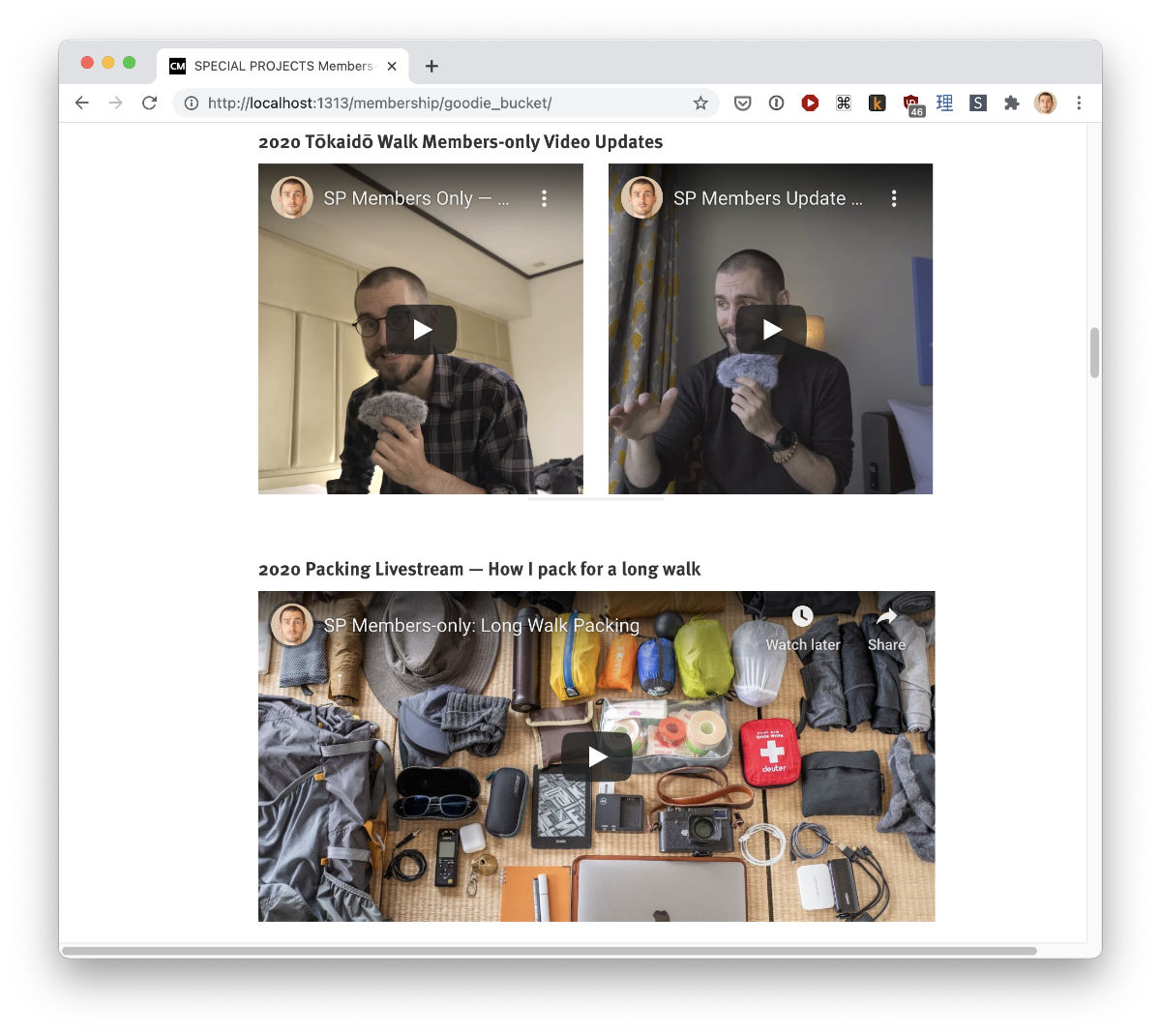

This Member Goodies page includes:
- Archives of all livestreams
- Archives of guest lectures
- Access to the Office Hours podcast
- Discount codes on books
- PDF book downloads
- Archives of members-only newsletters
- Archives of full-length Pop-up Walk videos
- Access to the SMS Project (May 2019) archive
- Access to the Pachinko Road Newsletter (Nov 2020) archive
- A bunch of walking-in-Japan phone wallpapers
You can read up on everything produced in 2020 on the membership signup page.
#Pricing
Not much to add on pricing from last year: $10 / $100 / $1500 for Monthly, Yearly, and Lifetime tiers feels just about right. I’d rather stretch to “provide that value” than lower the cost of the tiers.
Once again, in 2020, I was surprised and delighted by the number of Lifetime signups.
I still reply to every signup with a personal “thank you” email. It takes all of 5 seconds to send the “thank you” and immediately increases the intimacy of the membership-relationship. 99% of the time the response to my thank you is, “Thank you! I’ve been a fan since PROJECT-X or BOOK-Y.” This provides valuable context around who are becoming members and why they’re doing so.
in 2019, I had a $3/mo tier that was in part for folks for whom $10 was too much, and also for students. It had slightly different perks, and ultimately I found it created too much complexity. (For me and members, both.) I’ve since stopped offering the tier.
Instead, I offer free Yearly memberships to students;12 they just have to email me and say “Hey, I’m a student and interested in your work.” Rather than offer the discount sight-unseen, I find value in the small bit of friction that sending an email brings with it.
My secondary horizon-goal beyond producing books is to be a valuable creative / entrepreneurial archetype. At twenty I was bereft of accessible creative mentors. SPECIAL PROJECTS aims to be a semi-private way to share more of the creative processes behind my work, in an effort to demystify and help others do work they feel they need to do.
This ties in with the value of members as sounding board: It’s less stressful to do “behind the scenes” for a smaller audience of supporters. Without SP I wouldn’t have produced the livestreams or other “demystification” work of these last two years. So thanks, everyone.

#Technical Nuts and Bolts
As similarly outlined last year, here are the technical underpinnings of SPECIAL PROJECTS. A few things have changed:
For video, I use the superb open-source OBS software to run my livestreams.
I host members-only livestreams and archives on YouTube using unlisted YouTube videos.
I use Zoom to host members-only Q&As and to run guest lectures.
I started shooting video in the spring of 2020 using an X100V, and then moved to an XT-4, and am now using a Sony A7SIII. The Sony is definitely the best in terms of visual quality, autofocus accuracy, and computer integration, but it’s also the most expensive, and overkill for most. The X100V is a superb stills camera, and also a darn good “fancy” webcam when paired with some cheap LED lights.
I used to run my shop on Gumroad, but have moved over to Shopify because I needed more flexibility and control. I still love Gumroad and highly recommend it. For many creators it’s a perfect solution.
I use “Craigstarter” to run my book pre-launch campaigns. It can save you about 7% on platform fees. You should consider using it, too!
I still generate my own website using the Hugo static-site tool. It has gotten a bit too complex over the years, though, and were I starting again today, I’d consider 11ty. My sites are hosted on a Digital Ocean VPS (if you sign up with that link you get $100 in free credit (and I get a sweet $25, too)). After 15+ years, I stopped using Google Analytics and switched to Plausible for more privacy-friendly webstats. Fathom is also a good option with spectacular, heartwarming support.
I use Memberful as my membership program backend.
Memberful allows me to provide member-specific podcast subscription links for my Office Hours podcast.
Memberful also plugs into Campaign Monitor, my email / newsletter provider. Memberful automatically adds and removes members from members-only Campaign Monitor newsletters as folks sign up, upgrade, or cancel their memberships. Inside of Campaign Monitor I setup welcome email logic called “Automated Journeys” and use Campaign Monitor for all email / newsletter related correspondence.
Memberful plugs into Stripe for handling payments and payouts. Stripe pays out to a SPECIAL PROJECTS bank account every few days. My bank account is automated to split the payments into “SP savings” (for funding research), checking (for covering rent, et cetera), and retirement accounts (~5%). I feel confident all of the money that arrives via the membership program is being put to clear, well-defined, and easily traceable uses.
I like Zencastr for recording podcast interviews, but I’ve had it fail on me a couple times — reporting the wrong mic being recorded. So, be careful.
I’d rather cut off my legs than edit a podcast in anything but Descript.
And Simplecast is a solid host for your beautiful pods, and sponsors our SW945 archives.
If your only intent is to run a single (1) paid newsletter, then this stack could be drastically simplified by using a tool like Buttondown or Substack, both of which offer free / paid subscription functionality.
In the middle of writing this (January 2021), Revue was bought by Twitter. Their “pro” tier is now free, and they take only 5% of subscription revenue. This may be the best deal financially and functionally out there for someone starting a paid newsletter. That said: Twitter ownership does not carry a strong track record of keeping a service going. Still, this should be a safe option for the next few years.
I prefer the flexibility of my setup: I run three distinct newsletters (soon to be four; sometimes five with pop-up newsletters like Pachinko Road) via Campaign Monitor and can send to various tiers of the membership base as needed. For example, I sometimes offer “upgrade” discounts for long-term Monthly members to switch to Yearly.
Being an opinionated dork who is unable to commit to a single medium, room to experiment, and control over look and feel is critical to my work.
By running my own website I have that control in spades. My website is entirely custom. Which is an insane way to make a website today. You should not do this. I am one of those nuts who finds fiddling with code to be palliative — so building this place out is cheap therapy. That said, I think my site is fast and pleasant to look at and I work to make it faster and more pleasant over time. I like being able to publish essays on my own domain, use it as an archive for published-elsewhere essays, and create media-specific versions of pages for things like photo galleries or books.
Most importantly, I like being uncoupled from venture-backed platforms that will require me to publish / write / work in a way that can and will change over time.13 Email is like a sturdy old dog, an enduring creative companion, yet not “owned” by anyone, and therefore has remained fundamentally unchanged for decades. This is more miraculous than many of us give credit for.
As of February 2021, here are my base costs:
| Service | Cost/mo | Notes |
| Digital Ocean Server | $36.00 | Hosting for craigmod.com, walkkumano.com, etc |
| Cloudflare | $25.25 | Domain caching, protection, CDN |
| Memberful | $25.00 | Managing memberships themselves (tiers, signups) |
| Campaign Monitor | $200.00 | Running Ridgeline / Roden / SPECIAL PROJECTS newsletters |
| Mailmunch | $12.00 | Newsletter acquisition helper |
| Quicken | $5.00 | Accounting Software |
| Libsyn | $17.00 | On Margins hosting / publishing |
| Simplecast | $15.00 | Office Hours hosting |
| Zencastr | $18.00 | Interview Recording |
| Descript | $12.00 | Podcast editing |
| Shopify | $30.00 | Selling books / digital goods / hosting membership perks |
| Zoom | $20.00 | Hosting members-only Q&As, lectures |
| Plausible | $12.00 | Privacy friendly web stats |
| Google Apps | $6.38 | craigmod.com email |
| TOTAL | ~$434.00 | monthly running costs |
So, about or $5,200.00/year in recurring costs.
Memberful charges 4.9% per transaction. Stripe charges an additional 2.9% (+$0.30) credit card processing fee. Together, this represents an additional running cost of 7.8% on all membership fees.
Shopify charges ~2.8% for credit card processing on top of their $30/mo fee. I don’t use any paid Shopify plugins.
Because I am set to crest 25,000 subscribers on my newsletters, the largest recurring monthly cost is Campaign Monitor (the cost would be similar on MailChimp). There are geekier (and thereby more complex, finicky) but less expensive ways to run newsletters for this many subscribers, but I find using a service like Campaign Monitor is worth the cost for several reasons:
- Increased deliverability (less chance of ending up in spam) since they’re a trusted sender
- Direct integration with Memberful
- Powerful “journeys” that allow for automation
I prune my newsletters pretty ruthlessly — that is, I’ve removed some 20,000+ “inactive” email addresses over the course of the last five years. Those are addresses that have not “opened” or clicked on any link in the last two years. I do this because I pay to have these emails delivered. Before removing folks, I send an email to the cohort to be removed telling them I’m removing them, and inviting them to easily sign up again (in the case that they have just been reading without images turned on, and not clicking anything).
On launch of Kissa by Kissa I estimate my newsletters generated some $70,000+ in revenue within a few days.
So while $200-$300 a month may seem high, it’s reasonable if used well. Especially so considering Campaign Monitor itself isn’t re-selling subscriber information, isn’t performing some dark-pattern of business model judo, swapping an easily understandable contract for something opaque and morally dubious. So, I’m happy to pay for a service from a company with a clear business model! Choosing to work with companies with ethical business models is an increasingly-important ethical choice in and of itself.

#Conclusion
Two years ago upon launch of SPECIAL PROJECTS I wanted to stick my head in the snow, run away to a shack in Siberia, change my name, become a curmudgeonly chef, cook with a face mask on, serve only wild snow monkeys a gnarly stew. I was convinced I was ruining my life by starting a membership program. That I would collapse under its stress and produce nothing. Everyone who signed up would be angry and even the snow monkeys would renounce my very soul.
2019 turned out to be a pretty productive year. I wasn’t scalped by my members. I didn’t have to move to a Siberian labor camp.
And then 2020 came. And 2020, weird and horrible and twisted may it have been, was somehow more productive, more spiritually fulfilling, more creatively exciting, and more financially positive than 2019.
Member support manifested in surprising and delightful ways. I feel like I learned how to “activate” the members as a kind of cloud of brilliant starlings, diving and swirling around in the sky, helping me make sense of my own neurosis and work.14
Churn rate for SPECIAL PROJECTS continues to hold at about 5%. Generally, I take that as a sign of alignment between stated goals, expectations, and member experiences. That said: I expect this number to increase as interest in my work increases, tracking the bump in more casual members.
So, if my 7,000 or so words up above haven’t scared you off, haven’t made you realize the fatal folly of your creative-desires, and if you’re still intent on starting a membership program, here are my final tips:
- Start writing / making videos / producing what it is you intend to produce for members today, build up that muscle, and do it, ideally, for years (yes, years) before launching the program (I wrote Roden for about six years to build up an audience before launching)
- Have clear goals15 — small goals like writing and publishing targets, and bigger horizon-goals — that you can articulate clearly to yourself
- Exhaust / investigate all non-membership ways to achieve those goals
- Spend at least a month iterating on your plan before launching (it doesn’t have to be perfect, you’ll change it as you go)
- Be willing to commit for (at least) a full year, since it seems that a year of work is required to build momentum and finally understand what you and the program are capable of
- But really, launch with a five-year intention in mind; that’s where I suspect the real cultural and spiritual dividends begin to pay out
In the end, sustainability is the goal — sustainability for you to do the work you must do, at a meaningful scale, until you’re dead!
And as for that Hey bucko, voice we mentioned way up at the top? That’s from inside your own head. Use it as an engine, prove it wrong each and every morning, transmute its suspicion into the best work of your life.
Good luck! And if you have any questions, email me: craig@specialprojects.jp.
Oh, and, you know, please consider joining SPECIAL PROJECTS.
Thanks,
Craig
#Noted:
-
So once again, a rapturous THANK YOU to all new members and those of ye olden 2019 times. Doubly, triply thank you considering the financial hardships out there. The fact that so many of you stuck with me last year was one of the most heartening aspects of 2020. I hope my gratitude is apparent in the work. My year was scheduled to be one of events and travel, a lot of it member-focused — doing a tour of talks through Europe, for example. But all that fell away in March and I ended up completely reconfiguring the year around staying put, crunching through past walks and essays, and collating work into book form. In the end I now realize I have overly indexed travel into my life, and the staying in one place for (at least) a year was a tremendous boon. ↩︎
-
Reasons not to start a membership program (if any of these things happen consider them lucky bonuses): Money, easy money, super easy money, less work, less stress, more stability, better sleep at night. ↩︎
-
Keep in mind, this is including my few-years stint in Silicon Valley where money flows like virgin water from melting glaciers. ↩︎
-
By far the “easiest” digital things to sell subscriptions for are “self help” products. This includes tech / finance newsletters or courses (the implication being they self-help you make more money). If you’re not selling something in the self-help category then the battle is often extremely up-hill. But, as I outline above, offering tangible, physical things can accelerate growth. ↩︎
-
What in tarnation is “book-shaped”?! Well, it includes books. But it also includes any other project that involves so-called “collimated light.” Which means projects like films also fall into the book-shaped category. If we want to get all Media Theory 101, we could say that any “well-bounded media” is book-shaped. Mainly, though, it just means I want to make a lot of printed books. ;) ↩︎
-
Which is not a dig on Twitter, but just a recognition of its seduction to take time away from bigger, more meaningful work. Tweets are most dangerous because they can approximate the feeling of having “accomplished something creative” with entirely empty calories. So use social networks with clear goals in mind: They’re excellent for amplifying attention to be placed on the work of others you find inspiring or your own. ↩︎
-
I should note though, that I am not interested in “running” a community, mainly because that brings with it a huge amount of work. I can barely get through my most important emails; the thought of managing a Discord instance or Slack room or messaging board is downright crippling. That said: Members are more than welcome to self-organize. Unfortunately I find that I don’t have the emotional or social bandwidth to be an active participant. ↩︎
-
I’ve written about this before, but “archetypes” are my main way of measuring personal success. That is: Are people I respect, who are producing work that moves me, interested in entering my orbit? If over time more and more of these folks are entering my orbit, then I consider myself on a “successful” trajectory. This is harder (slightly) to quantify than watching numbers in a bank account go up, but I’ve found it to be a significantly truer compass for my own ethics and lifework. ↩︎
-
For legal purposes I should note: It’s not actually seed capital, you maniacs. Memberships are not investments. ↩︎
-
Which isn’t to say I don’t want my work to reach more people; of course that would be great. But I divine a kind of freedom at the current scale that excites me; an impulse to increase reach through changing how I work is wholly uninteresting. ↩︎
-
I’m still processing this idea of capping memberships, but it’s one I’ve never seen anyone else talk about, and feels excitingly heretical in the world of digital subscriptions where more is always better. So I figured I’d put stake in the ground and circle back to it in a year or so. ↩︎
-
This is such a weird distinction, I know, the “student” discount. Why students? Who is a student? What constitutes student? Aren’t we all students? Why not an “unemployed” discount? I don’t know! But what I do know is I like this idea: A period of time in life where you don’t (usually) have a lot of excess cash, and your mind is fertile and fresh and open to new ideas, and you have some time to think about who and what you want to be in the world. And, really, what kind of world you want to live in. You’ve yet to make any real “binding decisions” that otherwise burden folks in their late 20s and 30s and beyond. In an ideal scenario, this period tends to fall during college / university, early 20s, before you enter into or push back against the workforce. I think if you want to have an impact on the next generation and their sense of optionality, opportunities, and positive archetypes, then offering them an inside glimpse into creative processes and “non-standard” ways of investigating the world is critical, and in some ways maybe even a moral duty. When I was 20, I wish I had had better access to what I know now. It would have made me feel a hell of a lot less lonely and crazy. So, I suppose my free student tier is my ham-handed attempt to pay that forward. ↩︎
-
For an extreme example of this, see: Instagram. How it has changed from a simple stream of photos into the complex machinery of Stories and Reels and multiple-accounts and messaging, and how your work stands not on its own but in competition with all the other noise contained within the system. Instagram can be great for certain work, but fundamentally, I believe no one should stake their freedom as a writer / photographer / filmmaker / artist on a single platform. Platforms change over time to maximize engagement, which maximizes ad revenue, which is a fundamental wont of venture backed / public companies. ↩︎
-
Goals are different than deliverables, though they may be connected. ↩︎
